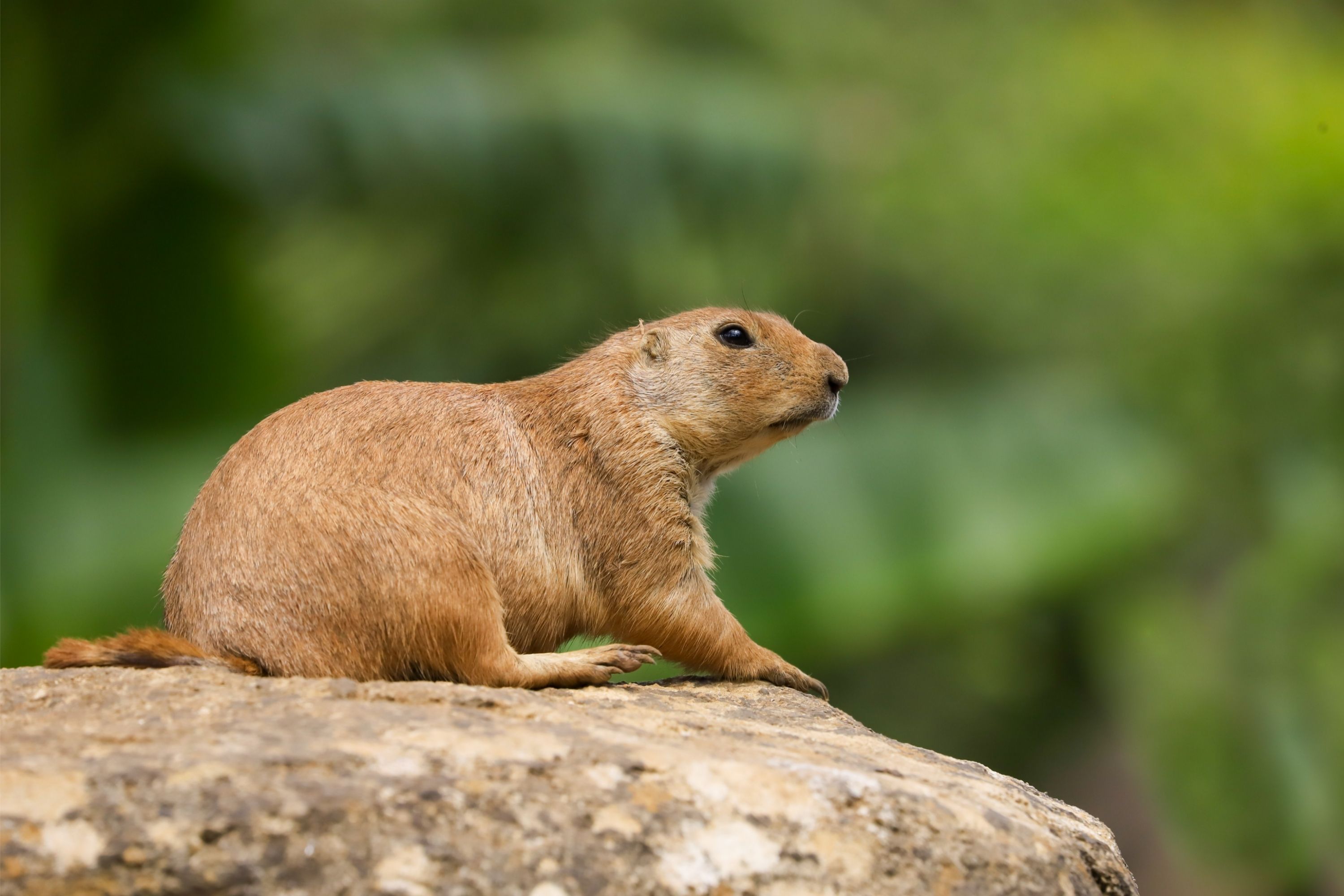Black-tailed prairie dog
(Cynomys ludovicianus)

Description
The black-tailed prairie dog (Cynomys ludovicianus) is a rodent of the family Sciuridae found in the Great Plains of North America from about the United States-Canada border to the United States-Mexico border. Unlike some other prairie dogs, these animals do not truly hibernate. The black-tailed prairie dog can be seen above ground in midwinter. A black-tailed prairie dog town in Texas was reported to cover 25,000 sq mi (64,000 km2) and included 400,000,000 individuals. Prior to habitat destruction, the species may have been the most abundant prairie dog in central North America. It was one of two prairie dogs described by the Lewis and Clark Expedition in the journals and diaries of their expedition. The historic range of the black-tailed prairie dog was from southern Saskatchewan and Alberta to Chihuahua, Mexico, and included portions of Montana, North Dakota, South Dakota, Wyoming, Colorado, Nebraska, Kansas, Oklahoma, Texas, Arizona, and New Mexico. As of 2007, black-tailed prairie dogs occur across most of their historic range, excluding Arizona;however, their occupied acreage and populations are well below historic levels. Black-tailed prairie dogs are diurnal.During the winter months, black-tailed prairie dogs do not fully hibernate. They continue to leave the burrow to forage, but will enter a state of torpor at night to conserve energy. Torpor is categorized by a drop in metabolism, heart rate and respiration similar to hibernation, but is involuntary and shorter in duration. On average, black-tailed prairie dogs will lose twenty percent of their body weight during the fall and winter seasons when they go through bouts of torpor. As winter progressed, the amount of time spent in torpor increases. Between different colonies the overall time spent in torpor varies, independent of prairie dog body mass. This may be due to weather during the previous growing season. As black-tailed prairie dogs receive most of their water from their diet, in years with poor rainfall, the black-tailed prairie dogs spend more time in torpor. Habitat preferences for the black-tailed prairie dog are influenced by vegetative cover type, slope, soil type, and amount of rainfall. Their foraging and burrowing activities influence environmental heterogeneity, hydrology, nutrient cycling, biodiversity, landscape architecture, and plant succession in grassland habitats.
Taxonomic tree:







